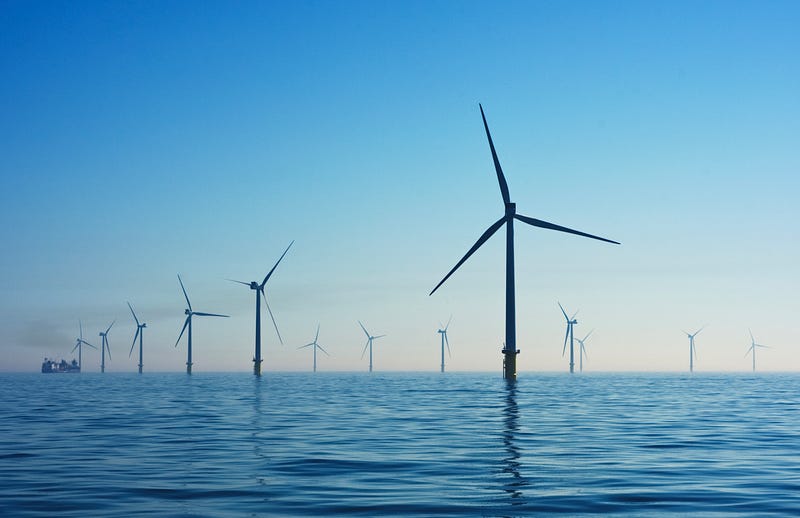Accelerating Renewable Energy Adoption: GE's Innovative Strategy
Written on
Chapter 1: A New Era for Renewable Energy
As the planet faces the urgent challenge of climate change, a shift from fossil fuels to renewable energy is crucial. Governments globally are gearing up for this monumental transition, with many private companies that once catered to the fossil fuel industry now pivoting towards renewable energy. General Electric (GE), founded by Thomas Edison and J.P. Morgan, is embracing this change with a groundbreaking initiative that not only promises to hasten the transition to renewable energy but also aims to make it more accessible. The question remains: how will this project work, and what impact will it truly have?
Section 1.1: The Innovative Partnership
GE has teamed up with Centrica to transform an abandoned gas power plant in Brigg, Lincolnshire, into a large-scale renewable energy storage facility. This ambitious project includes a substantial 100 MWh energy storage system capable of delivering 50 MW of power, with Centrica overseeing its installation and operation. Remarkably, this facility is set to be operational by next year, drawing energy from 43 nearby offshore wind farms in the North Sea.
Subsection 1.1.1: The Challenge of Renewable Energy

While solar and wind energy are remarkably cost-effective, they differ from traditional energy sources such as gas, coal, or nuclear power. For instance, when energy demand rises, nuclear reactors can be adjusted, or more gas can be burned. In contrast, solar and wind energy generation can be unpredictable; the sun doesn’t shine all the time, and the wind doesn’t blow consistently. Thus, to create a stable energy grid dominated by renewables, it's essential to store excess energy produced during peak generation to cover low production periods. This necessity has led to a growing interest in large-scale battery storage solutions, which are vital for a reliable renewable energy grid.
Section 1.2: The High Cost of Storage
Despite their potential, these large batteries come with a hefty price tag. Currently, lithium-ion batteries are priced at over $130 per kWh, meaning GE's 100 MWh battery could cost around $13 million, not accounting for installation and infrastructure expenses, which could add millions more and take years to establish.
Chapter 2: The Genius of Repurposing
GE and Centrica have cleverly sidestepped these challenges by repurposing an old power station, making it an ideal site for energy storage. The existing infrastructure—high-voltage terminals, transformers, and transmission lines—can be utilized to facilitate the efficient operation of the battery. With minimal modifications needed, the wind farms can easily connect to the grid to charge the system, simplifying the process of delivering power to homes.
The choice of location is also strategic. The power station is situated close to energy demand centers, reducing transmission losses and enhancing efficiency, while being distant enough to mitigate any potential local disturbances. This combination makes it an excellent fit for an energy storage facility.
Section 2.1: Cost Savings Through Innovation
By leveraging the existing infrastructure of the old gas plant, GE and Centrica could save significant sums, focusing primarily on building the battery and making necessary adjustments. This efficiency allows for a speedy project timeline, with the entire facility potentially operational within a year.
But does this innovative approach significantly alter the landscape of renewable energy?
Chapter 3: The Future of Renewable Energy Storage
While new storage solutions may carry higher initial costs due to infrastructure requirements, the overall price of renewable energy generation remains low. For instance, constructing a nuclear power plant costs around $7 million per MW, compared to only $850,000 for a MW of solar power, with battery costs ranging in the hundreds of thousands.
Though the construction duration may not be a significant hurdle—Tesla managed to complete a similar facility in Australia in just 60 days—finding suitable land and securing permissions in places like Britain can be a daunting task. GE’s innovative reuse of land and existing permits allows for quicker deployment in the right circumstances.
In fact, this land acquisition issue is one reason the UK is investing heavily in offshore wind energy. By placing wind farms at sea, local opposition to planning becomes less of an obstacle, and suitable land is easier to secure.
In conclusion, GE’s novel approach to building energy storage facilities may indeed facilitate faster adoption of renewable energy, albeit in specific contexts. Regardless, every step toward a fully renewable energy future is a step worth taking.